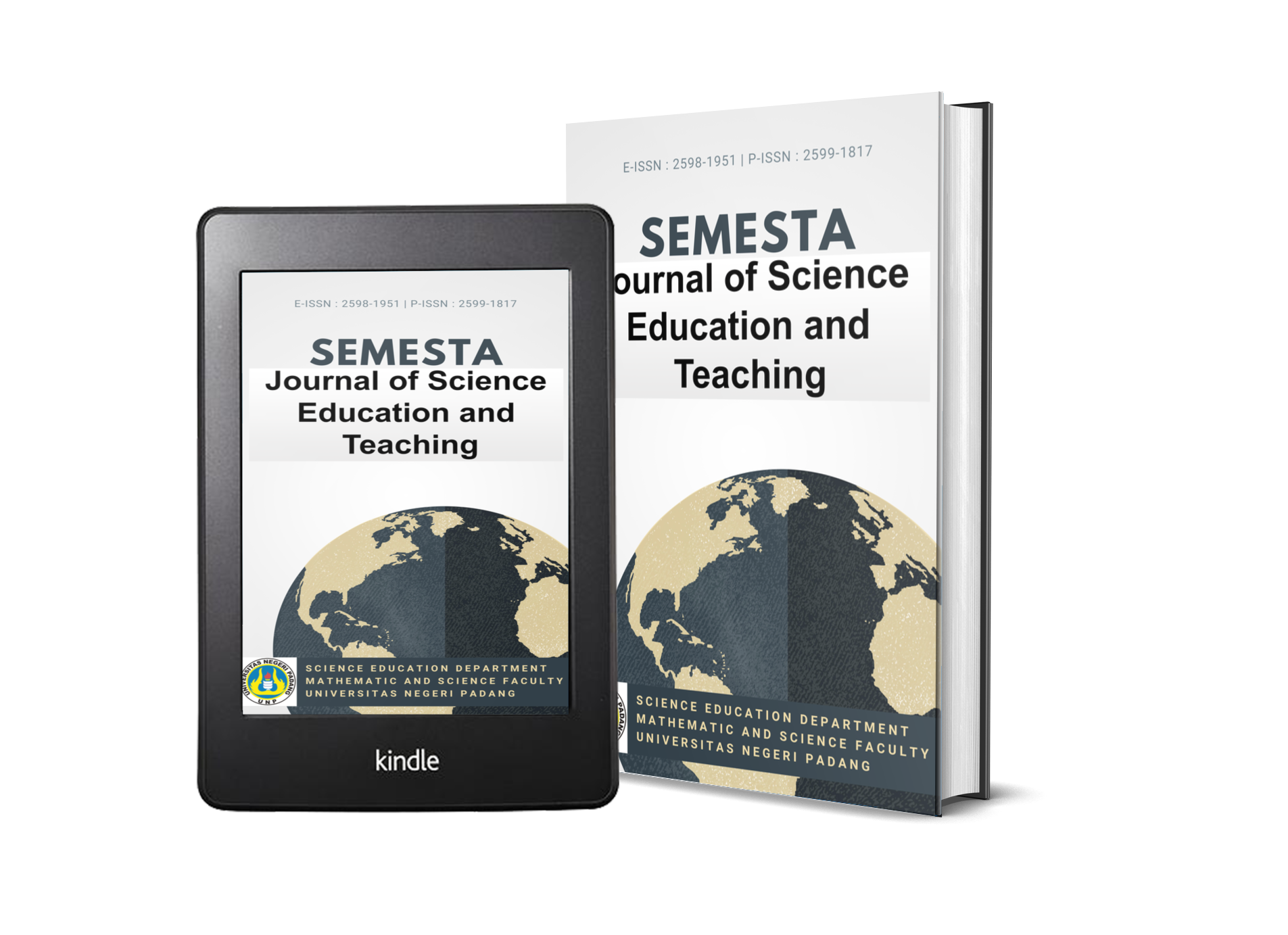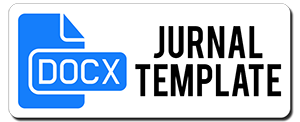
Publication Ethic
Publication Ethics
SEMESTA Journal of Science Education and Teaching is committed to upholding the highest standards of publication ethics and takes all possible measures against any publication malpractices. The Editorial Board is responsible for, among others, preventing publication malpractice. Unethical behavior is unacceptable, and the SEMESTA Journal of Science Education and Teaching does not tolerate plagiarism in any form. Authors who submitted articles: affirm that manuscript contents are original. Furthermore, the authors’ submission also implies that the manuscript has not been published previously in any language, either wholly or partly, and is not currently submitted for publication elsewhere. Editors, authors, and reviewers, within the SEMESTA Journal of Science Education and Teaching are to be fully committed to good publication practice and accept the responsibility for fulfilling the following duties and responsibilities, as set by the COPE Code of Conduct for Journal Editors.
Section A: Publication and authorship
All submitted papers are subject to strict peer-review process by at least two international reviewers that are experts in the area of the particular paper. Review process are blind peer review. The factors that are taken into account in review are relevance, soundness, significance, originality, readability and language. The possible decisions include acceptance, acceptance with revisions, or rejection. If authors are encouraged to revise and resubmit a submission, there is no guarantee that the revised submission will be accepted. Rejected articles will not be re-reviewed. The paper acceptance is constrained by such legal requirements as shall then be in force regarding libel, copyright infringement and plagiarism. No research can be included in more than one publication.
SEMESTA Journal of Science Education and Teaching recommends that authorship based on the following 4 criteria:
- Substantial contributions to the conception or design of the work; or the acquisition, analysis, or interpretation of data for the work; and
- Drafting the work or revising it critically for important intellectual content; and
- Final approval of the version to be published; and
- Agreement to be accountable for all aspects of the work in ensuring that questions related to the accuracy or integrity of any part of the work are appropriately investigated and resolved.
In addition to being accountable for the parts of the work he or she has done, an author should be able to identify which co-authors are responsible for specific other parts of the work. In addition, authors should have confidence in the integrity of the contributions of their co-authors.
All those designated as authors should meet all four criteria for authorship, and all who meet the four criteria should be identified as authors. Those who do not meet all four criteria should be acknowledged—see Section II.A.3 below. These authorship criteria are intended to reserve the status of authorship for those who deserve credit and can take responsibility for the work. The criteria are not intended for use as a means to disqualify colleagues from authorship who otherwise meet authorship criteria by denying them the opportunity to meet criterion #s 2 or 3. Therefore, all individuals who meet the first criterion should have the opportunity to participate in the review, drafting, and final approval of the manuscript.
The individuals who conduct the work are responsible for identifying who meets these criteria and ideally should do so when planning the work, making modifications as appropriate as the work progresses. We encourage collaboration and co-authorship with colleagues in the locations where the research is conducted. It is the collective responsibility of the authors, not the journal to which the work is submitted, to determine that all people named as authors meet all four criteria; it is not the role of journal editors to determine who qualifies or does not qualify for authorship or to arbitrate authorship conflicts. If agreement cannot be reached about who qualifies for authorship, the institution(s) where the work was performed, not the journal editor, should be asked to investigate. The criteria used to determine the order in which authors are listed on the byline may vary, and are to be decided collectively by the author group and not by editors. If authors request removal or addition of an author after manuscript submission or publication, journal editors should seek an explanation and signed statement of agreement for the requested change from all listed authors and from the author to be removed or added.
The corresponding author is the one individual who takes primary responsibility for communication with the journal during the manuscript submission, peer-review, and publication process. The corresponding author typically ensures that all the journal’s administrative requirements, such as providing details of authorship, ethics committee approval, clinical trial registration documentation, and disclosures of relationships and activities are properly completed and reported, although these duties may be delegated to one or more co-authors. The corresponding author should be available throughout the submission and peer-review process to respond to editorial queries in a timely way, and should be available after publication to respond to critiques of the work and cooperate with any requests from the journal for data or additional information should questions about the paper arise after publication. Although the corresponding author has primary responsibility for correspondence with the journal, the SEMESTA recommends that editors send copies of all correspondence to all listed authors.
When a large multi-author group has conducted the work, the group ideally should decide who will be an author before the work is started and confirm who is an author before submitting the manuscript for publication. All members of the group named as authors should meet all four criteria for authorship, including approval of the final manuscript, and they should be able to take public responsibility for the work and should have full confidence in the accuracy and integrity of the work of other group authors. They will also be expected as individuals to complete disclosure forms.
Some large multi-author groups designate authorship by a group name, with or without the names of individuals. When submitting a manuscript authored by a group, the corresponding author should specify the group name if one exists, and clearly identify the group members who can take credit and responsibility for the work as authors. The byline of the article identifies who is directly responsible for the manuscript, and MEDLINE lists as authors whichever names appear on the byline. If the byline includes a group name, MEDLINE will list the names of individual group members who are authors or who are collaborators, sometimes called non-author contributors, if there is a note associated with the byline clearly stating that the individual names are elsewhere in the paper and whether those names are authors or collaborators.
Section B: Authors’ responsibilities
Authors must certify that their manuscripts are their original work.
Authors must certify that the manuscript has not previously been published elsewhere.
Authors must certify that the manuscript is not currently being considered for publication elsewhere.
Authors must participate in the peer review process.
Authors are obliged to provide retractions or corrections of mistakes.
All Authors mentioned in the paper must have significantly contributed to the research.
Authors must state that all data in the paper are real and authentic.
Authors must notify the Editors of any conflicts of interest.
Authors must identify all sources used in the creation of their manuscript.
Authors must report any errors they discover in their published paper to the Editors.
Section C: Reviewers’ responsibilities
Reviewers should keep all information regarding papers confidential and treat them as privileged information.
Reviews should be conducted objectively, with no personal criticism of the author
Reviewers should express their views clearly with supporting arguments
Reviewers should identify relevant published work that has not been cited by the authors.
Reviewers should also call to the Editor in Chief’s attention any substantial similarity or overlap between the manuscript under consideration and any other published paper of which they have personal knowledge.
Reviewers should not review manuscripts in which they have conflicts of interest resulting from competitive, collaborative, or other relationships or connections with any of the authors, companies, or institutions connected to the papers.
Section D: Editors’ responsibilities
Editors have complete responsibility and authority to reject/accept an article.
Editors are responsible for the contents and overall quality of the publication.
Editors should always consider the needs of the authors and the readers when attempting to improve the publication.
Editors should guarantee the quality of the papers and the integrity of the academic record.
Editors should publish errata pages or make corrections when needed.
Editors should have a clear picture of a research’s funding sources.
Editors should base their decisions solely one the papers’ importance, originality, clarity and relevance to publication’s scope.
Editors should not reverse their decisions nor overturn the ones of previous editors without serious reason.
Editors should preserve the anonymity of reviewers.
Editors should ensure that all research material they publish conforms to internationally accepted ethical guidelines.
Editors should only accept a paper when reasonably certain.
Editors should act if they suspect misconduct, whether a paper is published or unpublished, and make all reasonable attempts to persist in obtaining a resolution to the problem.
Editors should not reject papers based on suspicions, they should have proof of misconduct.
Editors should not allow any conflicts of interest between staff, authors, reviewers and board.




